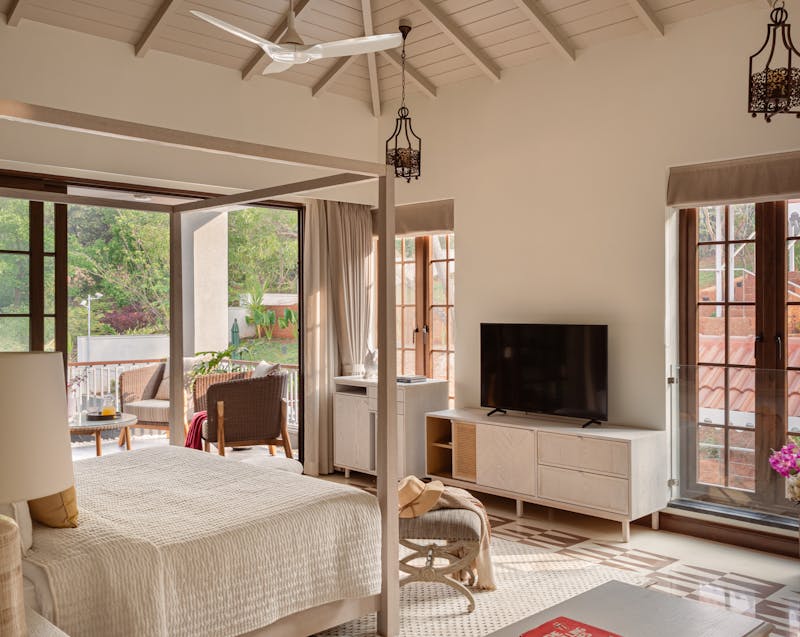

Designing your home is more than just filling it with furniture—it’s about creating a space that reflects your personality and lifestyle. One style that’s gaining popularity among homeowners is contemporary modern Spanish interior design, a look that combines timeless Mediterranean warmth with modern sophistication. This design approach celebrates open spaces, earthy tones, and natural textures while keeping everything sleek and functional.
If you’ve ever admired the charm of Spanish villas but want a cleaner, more streamlined look, this style might be the perfect choice. Below, we’ll break down the key elements—colors, textures, and materials—that make this design stand out, so you can bring a touch of Spanish-inspired elegance into your own home.
What Colors Define Contemporary Modern Spanish Interior Design?

Colors are the foundation of any interior design style, and in Spanish-inspired spaces, they set the mood instantly. In contemporary modern Spanish interior design, the palette is both warm and neutral, reflecting natural landscapes and Mediterranean heritage. These tones create a calming backdrop while allowing furniture and accents to shine.
Key color choices include:
- Warm Neutrals: Soft beige, ivory, and warm whites keep interiors bright and inviting.
- Earthy Tones: Terracotta, clay, and muted browns add depth and a connection to traditional Spanish roots.
- Accents of Black and Iron: Used sparingly in railings, fixtures, or window trims to bring contrast.
- Natural Greens and Blues: Inspired by landscapes, these shades introduce a refreshing touch without overwhelming the space.
By blending neutral bases with earthy highlights, you can achieve a timeless yet modern atmosphere that feels both cozy and sophisticated.
How Do Textures Enhance the Spanish Modern Look?
Texture is one of the most important features that give Spanish interiors their character. Without it, the space might feel flat and lifeless. In this design approach, texture balances smooth modern finishes with rustic charm, creating harmony between old-world tradition and contemporary living.
Popular texture ideas include:
- Stucco or Plastered Walls: Adds dimension and a handcrafted feel.
- Exposed Wood Beams: Even in modern homes, these create warmth and architectural interest.
- Woven Fabrics and Rugs: Think jute, wool, or cotton to bring softness underfoot.
- Smooth Tile Surfaces: Glazed ceramic or terracotta tiles provide a tactile contrast.
The beauty of texture is that it doesn’t just appeal to the eyes—it also engages the sense of touch. This layering of surfaces ensures that a home feels lived-in and inviting rather than overly polished.
The Role of Materials in Contemporary Modern Spanish Homes
Choosing the right materials is essential to achieve this style. Spanish interiors are traditionally rooted in natural, durable, and locally inspired materials, and the contemporary version continues this tradition while refining the finish.
Some of the most popular materials include:
- Wood: From flooring to furniture, wood brings warmth. Opt for medium to dark tones for a more authentic Spanish feel.
- Stone: Limestone, travertine, or slate can be used for flooring, fireplaces, or accent walls.
- Iron: Often seen in light fixtures, stair railings, or door hardware, iron adds subtle drama.
- Tile: Intricate patterned tiles or plain terracotta are key features, especially in kitchens and bathrooms.
- Glass: Contemporary updates often include large windows and glass doors, allowing more light and openness.
Blending these natural materials ensures that your home feels grounded while embracing a sleek, modern twist.
Bringing It All Together: Contemporary Interior Design Meets Spanish Heritage
You may wonder, how does this style differ from other Mediterranean or rustic themes? The answer lies in its ability to merge history with modernity. Contemporary interior design often emphasizes clean lines, minimal clutter, and open layouts, while Spanish interiors are rich in tradition, warmth, and texture.
When these two come together, you get:
- A home that feels timeless but not outdated.
- Spaces that are bright and airy yet deeply rooted in character.
- Interiors that balance functionality with charm.
By carefully selecting the right colors, layering textures, and using authentic materials, homeowners can create a style that honors Spanish traditions while still looking fresh and relevant today.
Tips for Homeowners to Incorporate the Style

If you’re ready to embrace contemporary modern Spanish interior design in your home, here are a few practical tips to get started:
- Start Neutral: Begin with a warm white or beige base for walls and ceilings.
- Add Natural Accents: Incorporate terracotta tiles, wood beams, or stone finishes for authenticity.
- Keep It Balanced: Mix smooth modern surfaces with rustic textures for contrast.
- Choose Functional Furniture: Opt for sleek designs, but don’t forget comfort. Spanish interiors always feel welcoming.
- Don’t Overcrowd: Allow your space to breathe by avoiding clutter.
With these tips, you can gradually transform your living spaces into a modern Spanish retreat that feels both stylish and cozy.
Final Thoughts
Contemporary modern Spanish interior design is a beautiful way to create a home that feels timeless, warm, and functional. By focusing on the right colors, layering textures, and selecting natural materials, you can capture the spirit of Spanish heritage while enjoying the sleekness of modern design. For homeowners looking for a style that is both inviting and sophisticated, this design approach offers the best of both worlds.